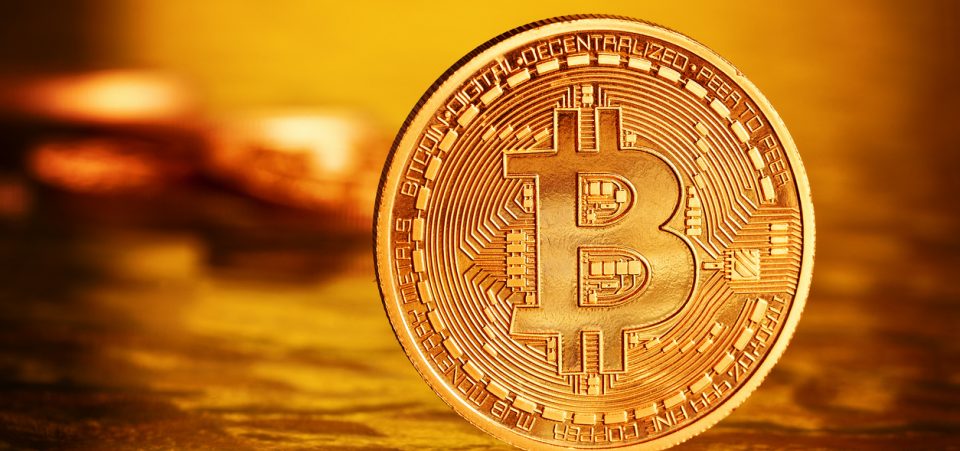The Risky Conditions Are Ripe for Higher Gold Prices in 2018
Bitcoin has made a steady recovery since collapsing in the first week of February. But it’s still well below 50% of its December 2017 peaks. Most surprising, however, is gold. Gold prices started to show strength in the last weeks of 2017, reaching a peak of well over $1,360 per ounce at the end of January 2018.
It’s a moment when everything related to market speculation seems in limbo. The Dow Jones continues to hover around 25,000 points. The February correction has clearly scared off enough equity investors to prevent a quick return to the January record highs.
Of all the investment “products” now, gold (and even silver) is the one that makes the most sense. There’s simply too much economic, political, and international uncertainty to take risks investing in stocks. And there’s way too much opacity around Bitcoin and other cryptocurrencies—not to mention the extreme volatility—for anyone to recommend these so-called financial “instruments.” Yet, gold remains stuck at around the $1,325-1,335 range.
Its lesser cousin, silver, has performed in a similar manner. Oddly, gold and silver were gaining just as the Dow Jones index was setting its all-time records. Normally, gold and equities have a negative correlation. One goes up when the other goes down. Bitcoin, meanwhile, has added a new and confusing element to the mix, passing itself off as an alternative “safe haven” from Wall Street.
Safe Haven Is the Last Thing Bitcoin Can Claim; It’s More Volatile Than Durian Fruit
Still, gold should be trading at a much higher price. Given the extent and the nature of risks now, one would expect a resumption of the gold rush.
Those who like cryptocurrencies and the innovation they represent could compromise, investing in gold-backed crypto values. These are essentially convenient tools of investing in gold with the added “hip” attraction of a cryptocurrency veneer. Australia’s Perth Mint plans to “mint” a physical gold-backed cryptocurrency. In the United Arab Emirates, OneGram already tried this experiment in May 2017. (Source: “Cryptocurrency backed by gold being developed by Perth Mint to entice investors back to precious metals,” Australian Broadcasting Corporation, January 23, 2018.)
Why Is Gold Not Reaching Its Potential?
For reasons explained below, gold should be trading well over $100.00 higher than its recent highs. In other words, gold should have reached $1,500 per ounce. After all, one of the factors that has influenced Wall Street’s performance lately is the prospect of rising inflation. That, until recently, was a trigger for bullish gold activity.
But the Federal Reserve and European Central Bank have modified investment patterns. What was once a given no longer has the same effect. Investors’ interpretation of inflation effects appears to have concentrated on the U.S. dollar moving higher in response to a Fed rate hike.
Perhaps Bitcoin and gold perform in tandem? That’s certainly the impression that this Bitcoin vs. gold chart suggests.

Chart courtesy of StockCharts.com
Bitcoin started to rebound after its big drop almost at the same pace that gold did (in graph terms). This suggests that, in the minds of some investors, Bitcoin may be complementing—if not replacing—the role that gold once dominated.
So, is Bitcoin the Roger Moore to Sean Connery’s James Bond? Not likely.
Connery and Moore delivered effective—if different—performances of the famous British secret agent character. Gold and Bitcoin could not be more different. And their similar trading patterns on the chart occurred only at the very end, when the Dow was dropping as well.
The prospect of inflation and the interest rate hikes, which everyone expects the Fed to adopt, is channeling many investors away from equities. But Bitcoin is interfering with gold. This has been especially clear in the past two months. Gold was going higher when Bitcoin dropped and vice-versa.
It’s almost as if investors were channeling funds into Bitcoin that would otherwise have gone toward gold. I stress that there’s not enough data yet on determining the exact correlation between gold and Bitcoin trading patterns. People have used gold to establish value for centuries. Bitcoin was first introduced in 2009 and specialized exchange mechanisms only appeared at the end of 2017.
Bitcoin Cannot Replace Gold as a Haven Asset
Nevertheless, it’s clear that Bitcoin has become more than a new investment “product.” For some, it’s become a safe-haven asset. Yet, what is more volatile than Bitcoin?
Millennial investors (those born between 1980 and 2000) have never really invested in a bear market, assuming they started investing in 2009, and now they face the prospect of rising interest rates.
They shun stocks as the investments of the proverbial “man,” the establishment. Bitcoin has the electronic nature that they trust. Millennials have never gone to school without knowing computers, and many have grown up with the Internet since their crib days. Technology is as comforting to them as a pacifier is to a baby.
If millennials mistrust stocks as part of the establishment, imagine how they feel about gold. Indeed, disappointed gold investors, especially those who have grown impatient with gold’s slow pace, should consider the Bitcoin effect.
But if the modernists dreaming of Star Trek-like value exchange solutions are shunning gold, those invested in stocks are more likely to use the yellow metal as a refuge.
Note that no matter how slowly gold is moving, the forecasts, even those from the “prestigious” banks (in polite language, the greediest banks) like Goldman Sachs Group Inc (NYSE:GS), had foreseen a far more bearish gold price scenario in 2018. Gold has already defied and beaten expectations.
Thus, it is too early to give up on gold, let alone declare that gold has collapsed.
Fears that the dollar will drop against all major currencies, even when interest rates increase, should offer gold fans more comfort.
Many Are Ignoring Political Risk
Gold investors won’t have to wait much longer to see some reward for their patience and loyalty. Political risks have rarely been this high. In the days of the Cold War, enemies were recognized and clear. World War II was still a close memory and the idea of a nuclear conflict frightened even the most cowboy of presidents. George W. Bush was a mere shadow of Ronald Reagan when it came to his vision of the American dream.
The main reason that investors have ignored political risk is the same reason they’ve ignored financial risk. The central banks of the world’s leading economies, from the U.S. Federal Reserve to the European Central Bank and the Bank of Japan, have kept a near-zero interest rate policy.
They’ve kept this policy for almost a decade. It’s unprecedented. These low interest rates have distorted the very idea of risk.
Borrowing to invest in equity assets suddenly made sense. And it keeps making sense, even if some have started to realize that there are precious few sensible assets on Wall Street—at their current prices. Gold is the rare one. It will gain soon enough.
I will, a priori, eliminate Bitcoin as a serious asset. It may be a distorting agent, but it has proven to be so volatile that it cannot serve as a benchmark for anything other than a potential tool to measure greed and the gullibility of the masses.
U.S. equity markets have reached record highs since election day 2016. They have survived a rising crescendo of speculation over alleged Russian interference in the election, North Korean nuclear missiles, an exponential escalation of the Syrian conflict to envelop Israel, problems between Iran and the United States, and China’s growing military and economic might. The European elections that threaten market disruptions are petty risks compared to the others.
The other pattern that has been changed is oil. Oil prices used to send markets into turmoil when they increased sharply. Those who remember the 1973 oil crisis are aware of what higher prices for this commodity can do. The effects were social, cultural, economic, and political.
The market recovery that began in 2009 was not only lubricated by low interest rates, it was facilitated by low energy costs.
The problem, however, is in limiting our understanding of economic recovery to the financial markets and the Dow Jones. These may offer a picture of risk aversion and suggest that the economy is performing well for some people. But most people in the world are not invested in the markets. And not all those who are benefit the same way.
The overall economy has not spread its benefits equally. In fact, income inequality has reached astronomical levels. This is one of the reasons that so many populist parties and leaders have emerged. After all, Donald Trump is one of the most garish manifestations of this phenomenon.
Populism is on the rise again in Europe. In the mid-term, this tendency could compromise free-trade agreements and the concept of globalization as we’ve come to understand it. It may not be a bad thing, but it will disrupt the current patterns of trade and economics, eventually reaching Wall Street.
The status quo of “calm” is coming under increasing threat, but everyone, from citizens to investors, has forgotten how the world works in a higher-interest environment. That’s why gold prices are inevitably going up and why gold remains the one and only safe-haven investment.






